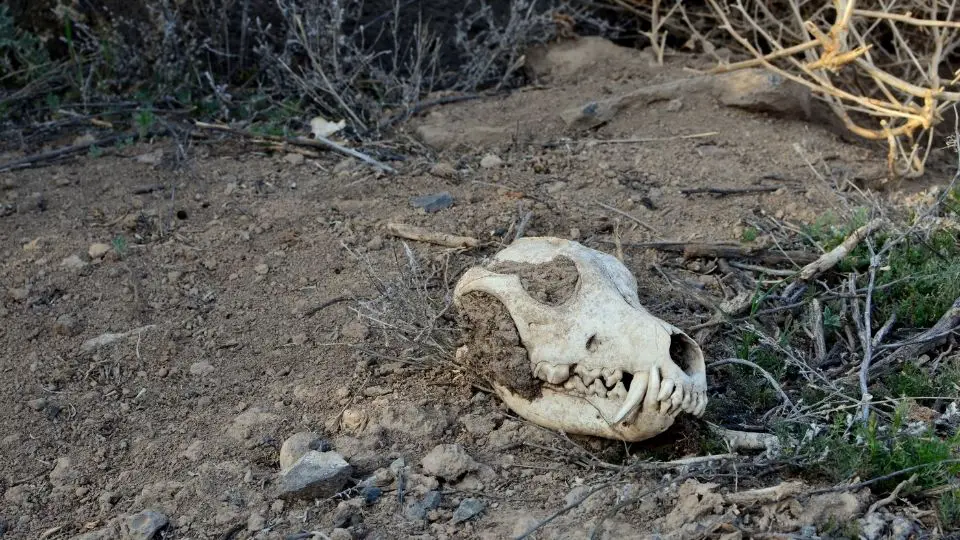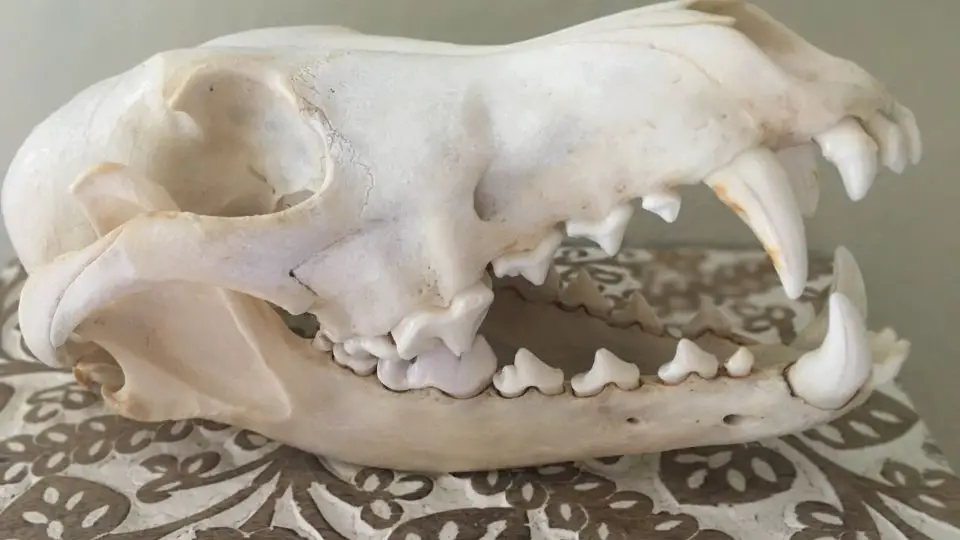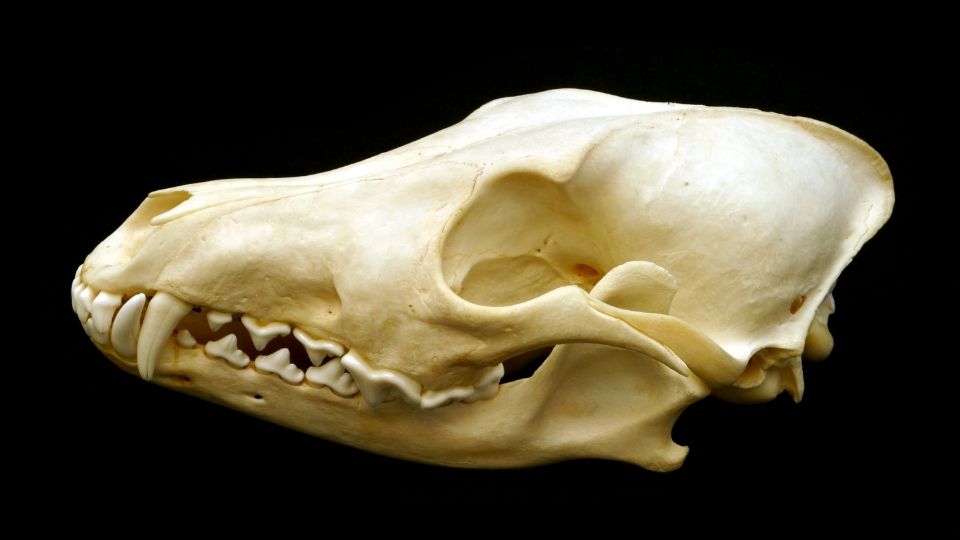The coyote's skull is one of its most distinguishable anatomical features. It measures 7.5 inches long, has front-facing eye sockets, a large braincase, and an elongated snout. Its sagittal crest is low and its canines are sharp—the perfect fusion for a fearsome predator.
An adult coyote skeleton features a four-legged structure with hind legs longer than its front legs, adapted to help them run fast to catch prey. This canine also has a long neck and a long vertebrate that extends to its tail region, a trait shared among other canines. Let’s learn more about coyote skulls to help you properly classify and identify them.
Table of Contents
How Do You Identify a Coyote Skull?
One of the best ways to identify a coyote skull is by measuring its size. A coyote skull typically measures 7.5 inches in length; so if you come across a skull that is shorter or longer, it may not be a coyote.
In addition to size, coyote skulls possess the hallmark characteristics of wild carnivores: sharp canines, a narrow snout, lowered sagittal crest (for enhanced jaw power), and forward eye sockets. These attributes assist coyotes in their role as formidable predators in the food chain.
In addition, the dental formula of a coyote is another good indicator, stated as 3/3, 1/1, 4/4, and 2/3. This means that a coyote teeth arrangement are unique:
- three incisors on the top and bottom of the mouth
- one canine on the top and bottom
- four premolars on the top and bottom
- two molars on the top and three at the bottom
Lastly, the geographical location is not to be overlooked. Coyotes roam the vast expanse of North America and Canada, so if you come across a skull with the aforementioned features on North American soil, there’s a high chance it’s a real coyote skull.

How Big Is a Coyote Skull?
A coyote skull measures about 7.5 inches, or approximately 19 cm. The size of a coyote skull is larger than other wildlife mammals like opossums, skunks, and foxes.
Can You Sell Coyote Skulls?
Yes, it’s perfectly legal to sell coyote skulls. Whether it’s for taxidermy purposes or to fill up a personal library of animal skull replicas, you’re free to find, clean, possess, and sell coyote skulls in the market. This holds true for other skulls too, like a bobcat skull, a red fox skull, or a wolf skull.
The skull of an adult coyote (Canis latrans) goes for $20 to $36 in online specialty stores, depending on where you purchased it. However, young adult coyote skulls go for a higher price because they’re less brittle and are more durable.
How Do You Clean a Coyote Skull?
If you’ve stumbled across a coyote skull in the wild or your yard, you may be wondering how to clean it. While there are many ways to clean an animal skull, we recommend the following method for general touch-ups:
- Submerge the skull in a solution of cold water and mild detergent for a few days to remove any flesh stuck to the skull.
- Alternatively, you can simmer the skull for a few minutes in a pot of water on the stove.
- Observe the skull closely so that it doesn’t get too hot and damage the bone.
- Degrease it by leaving it to soak in cold water for a few days.
- This is to prevent a build-up of rotten grease on the skull’s surface.
- Air dry the skull so it won’t attract bugs or insects.
- Next, place the skull in a 35% hydrogen peroxide solution
- 10 oz of hydrogen peroxide for every 5 litres of water
- Leave it there for 24 hours.
- After 24 hours, use wood glue to stick fallen teeth back to the mandible or jaw bone.
- Dry the skull for another day in a place where it won’t attract insects.
- Spray it with polyurethane for a polished look.
How Long Does It Take To Boil a Coyote Skull?
Depending on the size, the time it takes to boil a coyote skull can vary. The recommended time is 20 minutes on low to medium heat for adult canid skulls.

How Can You Tell the Difference Between a Coyote and a Fox Skull?
One effective way to tell the difference between a coyote and a fox skull is by the structure of their braincase. A fox has an oval, smooth, and rounded braincase, while a coyote’s braincase is more angular on top.
Aside from that, the size of the skull can also be a giveaway. Coyote skulls are 7.5 inches in length, whereas fox skulls measure only about 5.5 inches to 6.5 inches in length.
What Is the Difference Between a Dog Skull and Coyote Skull?
One of the primary differences coyotes have over dogs is their narrower and longer muzzles. Additionally, the teeth of the coyote are sharper and thinner than domestic dogs. These features help them hunt prey in the wild, unlike their domesticated brethren who aren’t as reliant on chewing on large mammals like deer for sustenance.
Another difference coyotes have is that their lower teeth are almost perfectly aligned with each other, which is not like most dogs. This is because their tongue size is noticeably smaller than that of medium-sized dogs.

